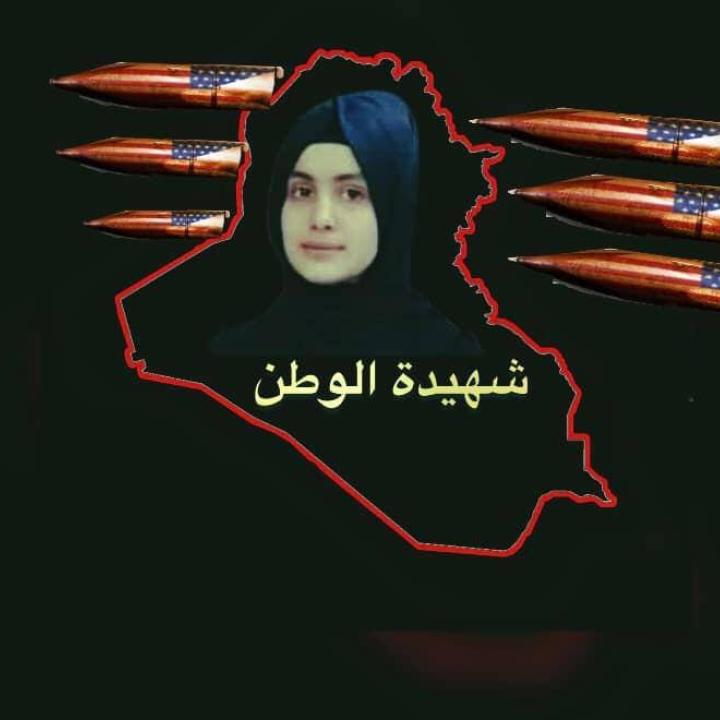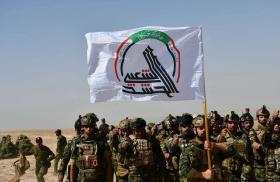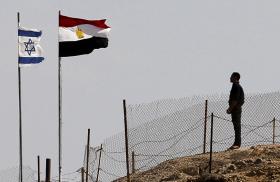

"Resistance" groups launched a coordinated and intentionally misleading anti-American media campaign to ease domestic pressure caused by the unrest in Iran.
Amid the widespread protests in Iran, which were triggered by the death of Mahsa Amini in the custody of the morality police, Iran-backed muqawama (resistance) groups in Iraq have been exploiting the death of a girl in Baghdad to ease pressure on themselves. Last month, Zainab Isam al-Khazali was killed by a stray bullet fired from a military shooting range in the capital's Abu Ghraib neighborhood. The muqawama are claiming she was killed by U.S. troops, despite the fact that Iraq's national security advisor already confirmed that Iraqi military forces were responsible for the accident and that American soldiers no longer conduct any activity in this area.
The main channel behind the disinformation campaign was Sabereen News. On September 19, it published a Telegram post that read, “The American forces killed an Iraqi girl named Zainab Isam Majed al-Khazali in the Abu Ghraib area, Albu Alwan village, by random shooting from the Victoria base, in which live fire exercises happen from time to time” (Figure 1).
Sabereen then posted remarks by two men who were introduced as relatives the victim. They narrated what happened and said that the bullet came from “the airport firing range, belonging to the joint operation commands.” They also said that people in their neighborhood had been complaining about dangerous practices by those who run the range. Importantly, however, they never mentioned U.S. troops. Despite this, Sabereen captioned the video as follows: “Relatives of the girl killed by the bullets of the American forces...confirm that the girl was exposed to random bullets from the airport camp" (Figure 2).
This was the start of a coordinated anti-American disinformation campaign led by senior muqawama leaders. On September 20, Qais al-Khazali, the leader of Asaib Ahl al-Haq (AAH), issued a statement demanding “an immediate investigation in the incident of the martyrdom of the young fifteen-year-old Zainab Isam who was martyred by the bullets of the U.S. troops. We call on the security and intelligence forces to prepare a detailed report explaining the circumstances of the incident and how a military base can exist on Iraqi soil in clear violation of the Iraqi constitution and how a gross violation of Iraqi sovereignty [is allowed to happen] and how [the U.S. troops are allowed] to fire live ammunition in residential neighborhoods under the pretext of training [the Iraqi forces]” (Figure 3).
Many muqawama figures issued similar statements, which helped spread the false story. Meanwhile, muqawama television channels began covering the incident extensively and blaming U.S. troops for the shooting. AAH’s al-Ahd TV interviewed the father of the deceased, who said that he and others had been complaining about the firing range for years. Yet like the previous relatives, he never mentioned U.S. troops. Al-Ahd's social media nevertheless captioned the interview as follows: “The father of the martyr Zainab Isam: We appealed to remove the shooting range at the Victoria base which belongs to the American occupation away from the civilians’ homes” (Figure 4). This pattern was repeated across other TV channels belonging to muqawama militias.
After the campaign was established, numerous muqawama social media messages were posted comparing Zainab Isam's death with Mahsa Amini's. For example, Mahmoud al-Rubaie, spokesperson for the Sadiqoun bloc (AAh's political wing), posted photos of the two in a tweet that read, “Zainab al-Iraqi was killed by the American forces, so the cowards were silent and unable to condemn and console [the family of the deceased]. The Iranian Mahsa died of a stroke, so those silenced by the American crime rose up” (Figure 5).
Iraqi media have been closely following the developments in Iran, with Sadrist social media channels being particularly sympathetic toward the protesters and very critical of the Iranian regime. The muqawama likely felt pressure to respond to this negative coverage of their regime partners in Tehran—namely, by exploiting the tragic death of Zainab Isam to muddy the domestic conversation.








